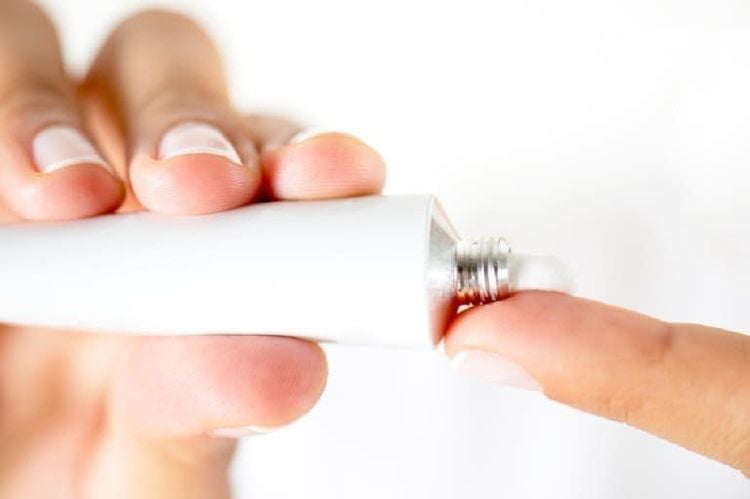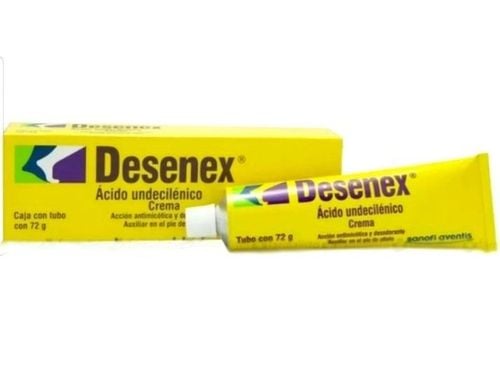This is an automatically translated article.
Topical medicine Dipolac is a medicine to treat dermatitis, fungal skin diseases or skin infections. The composition of the drug includes Gentamicin 15mg, Betamethasone 9.6mg and Clotrimazol 150mg with many synergistic effects to help improve local infection and accelerate skin wound healing.
1. What is Dipolac topical?
Topical Dipolac is a medicine that is prepared in the form of a topical cream. A combination of three ingredients, betamethasone, clotrimazole, and gentamicin, is used in the treatment of skin infections.
Accordingly, the effect of Dipolac is based on the combined effect of all three ingredients. Betamethasone is a steroid that works by blocking the production of certain chemical messengers (prostaglandins) that cause the affected skin to reduce redness, swelling, and itching. Clotrimazole is an antifungal, which prevents the growth of skin fungus while the other ingredient is gentamicin which is an antibiotic, which prevents the growth of bacteria that cause primary and secondary bacterial infections on the skin. Therefore, the three ingredients in Dipolac topical will effectively treat skin infections.
Usually, thanks to the presence of betamethasone ingredient, the patient will feel the effects immediately after taking the drug. However, it may take a few days for the other two ingredients of Dipolac, clotrimazole and gentamicin, to kill off harmful bacteria and make you feel really good.
2. Indications of the topical drug Dipolac
Dipolac topical is indicated for the treatment of corticosteroid-responsive dermatoses complicated by bacterial and fungal infections.In addition, Dipolac topical is also effective in the treatment of tinea versicolor, tinea versicolor, acute and chronic eczema.

Người mắc bệnh chàm được chỉ định dùng thuốc bôi ngoài da Dipolac
3. Dosage and how to use Dipolac topical medicine
Dipolac topical is used by gently applying a thin layer over the affected areas of skin twice daily.The duration of treatment varies depending on the extent and location of the disease as well as the patient's ability to respond. Accordingly, for effective treatment, Dipolac topical should be used regularly, using only a small amount for each cream application, but should be done regularly every day.
4. Notes when using Dipolac topical medicine
Dipolac topical has the potential to cause drug interactions if used concurrently with nephrotoxic drugs including other aminoglycosides, vancomycin and some cephalosporins or ototoxic drugs such as ethacrynic acid and furosemide as well. may increase the risk of toxicity.At the same time, the contraindication to topical use of Dipolac is in patients with a history of hypersensitivity reactions to any of the components of the drug. Adverse reactions when using Dipolac topical have been reported very rarely, including hypopigmentation, burning sensation, red rash, discharge, ... on the area of the application.
For pregnant women, because the safety of topical corticosteroids has not been established in these subjects, it should be used during pregnancy only if the potential benefit outweighs the potential risk to the fetus. . During breastfeeding, a decision should be made whether to discontinue nursing or to discontinue the drug when assessing which decision has the greater benefit.
In addition, during the use of Dipolac topical, patients must not arbitrarily combine with any other products that also contain corticosteroids. Furthermore, topical dipolac is absolutely not for use on the face and avoids direct contact with the eyes.
Finally, the patient also needs to be careful, do not use it for a long time or use it on large areas or open wounds, the injured area is covered with bandages, the external genital area and skin folds. Rinse with cold water if you accidentally get the drug on these areas.

Người bệnh nên dùng thuốc kem bôi theo đúng chỉ định từ bác sĩ
Special skin conditions, the disease does not improve after one week of taking the drug should be consulted by a specialist with an appropriate topical preparation, after the possibility of skin manifestations of systemic diseases has been excluded. system.
In summary, Dipolac topical drug consists of three ingredients, betamethasone, clotrimazole and gentamicin, for synergistic effects, both anti-inflammatory and bactericidal to help effectively improve skin inflammation or skin infections in general. However, this medicine should not be used more often or for longer than advised by your doctor, and should inform the doctor if the treated area does not improve after a week of treatment to be evaluated for possible treatment. intervention as well as avoid unwanted effects of the drug.
Vinmec International General Hospital is always the address to receive examination and treatment of all health problems. In case patients have skin diseases, they can go to the hospital to be checked and receive the most useful advice from doctors and dermatologists.
Please dial HOTLINE for more information or register for an appointment HERE. Download MyVinmec app to make appointments faster and to manage your bookings easily.













